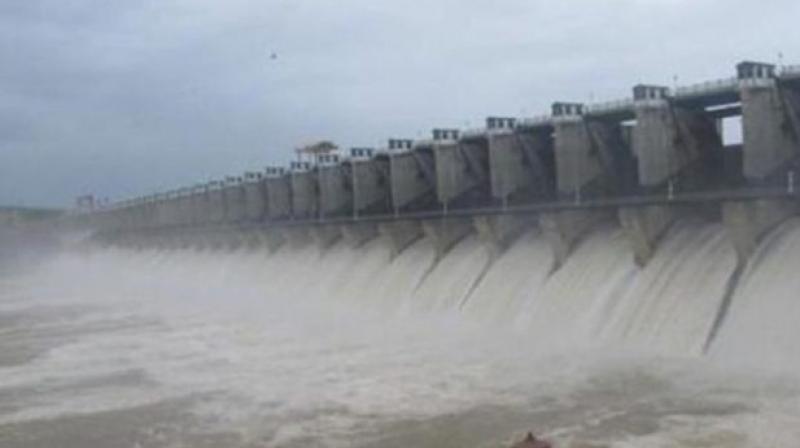Tamil Nadu wants Cauvery Management Board, Karnataka not for it
Karnataka opposes it saying that the SC only talked of a scheme to ensure implementation of the verdict.

CHENNAI: Karnataka on Friday opposed Tamil Nadu’s demand for constitution of Cauvery Management Board arguing that the Supreme Court only talked of a “scheme” to implement its verdict on release of water and did not specify any mechanism.
At a consultative meeting called by Union Water Resources Secretary U P Singh, representatives of the two states submitted their suggestions and views orally on the Supreme Court verdict that reduced the quantum of water to Tamil Nadu, but asked the Centre to put in place a mechanism to ensure that the release of water is adhered to.
While Tamil Nadu says the mechanism meant constitution of Cauvery Management Board as suggested by the Cauvery Water Disputes Tribunal in its final award in 2007, Karnataka opposes it saying that the SC only talked of a “scheme” to ensure implementation of the verdict.
“On behalf of the Tamil Nadu Government, it was stressed that Cauvery Management Board should be set up within six weeks as ordered by the Supreme Court based on the final verdict of the CWDT. The government also insisted on setting up of Cauvery Water Regulatory Authority that is vested with all powers to implement the orders of the CWDT,” a terse statement from Tamil Nadu government said.
Tamil Nadu Chief Secretary Girija Vaidyanathan and PWD Secretary S K Prabhakar made the submissions orally, while Karnataka Chief Secretary Ratna Prabha passionately opposed the CMB. “Only unanimous decision taken at the meeting was that there should be a scheme,” she said.
Karnataka’s stand is set to generate much political heat in Tamil Nadu with political parties making it clear that they cannot settle for anything less than CMB.
After the meeting, sources said it was decided that the member states would submit their recommendations vis-à-vis the structure of the scheme, functions of its members and responsibilities.
“The sentiment of the member states, which also included Kerala, was that the physical assets (dams and other structures on the river) would continue to be with the respective states, while the regulation, water release and supervision aspects would be dealt with by the scheme,” a senior official said.
“The meeting was called for consultation…we wanted to know the views of the four states. Since the scheme has to be formulated, what should be the exact shape, composition, roles and responsibilities of the body that will be set up under it,” Water Resources Secretary Singh Singh told reporters after the meeting.
He said the states had already given their views orally on the issues concerned and that they might make written submissions if they wanted. To a question on whether the composition of the scheme would be on the line of what the CWDT had recommended, Singh said it was a “matter of interpretation”.
Singh confirmed that all the four states would have representation in the scheme and cited two models of the Bhakra Beas Management Board (BBMB) and the Narmada Control Authority (NCA).
“These models are slightly different in the sense that in one case, the assets have been taken over by the BBMB. Whereas, under the NCA model, the assets continue to be with the state governments, but the regulation, release, supervision are concerned with the NCA,” Singh said.

